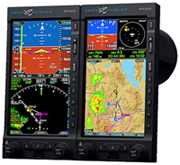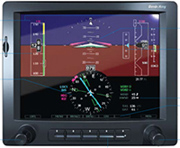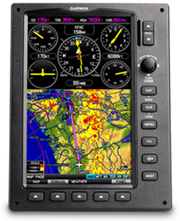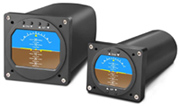Avionics firms introduced an all-time high 31 new products at the Aircraft Electronics Association’s annual convention in Dallas this year, and 138 exhibitors showed up despite the gloomy economy.
Were they in denial? Hadn’t they got word that new aircraft manufacturing has fallen off a cliff, used aircraft values have tanked, and new technology retrofits are being postponed or canceled like never before?
“Yeah, we know all that,” said Paula Derks, AEA president. “But we’re an industry of doers. We depend on ourselves, and we don’t give up easy.”
The avionics industry has long been aviation’s fastest changing, most dynamic market, and the rate of innovation appears to be accelerating—despite all the good excuses for hunkering down. New products for the general aviation fleet include a variety of glass-panel retrofits, which promise safety and situational awareness benefits that airliners would envy.
Aspen is tantalizingly close to releasing an intriguing multifunction display (MFD) that, in concert with its popular primary flight display (PFD), will allow GA pilots to ditch vacuum systems once and for all. Bendix King is on the cusp of releasing its long-awaited KFD 840 PFD, an all-in-one replacement for electro-mechanical cockpit instruments.
Garmin is offering experimental and light sport aircraft owners a bright, big-screen PFD/MFD/engine monitor for under $10,000 with its G3X products that will provide flight instruments, a color moving map, terrain, traffic, satellite weather, and IFR charts and approach plates. Other Garmin products ranged from a $400,000 conversion of King Air 200 cockpits to its G1000 avionics suite to a simple “Flight Plan Migrator” kit that allows pilots to download flight plans from the Jeppesen data base to their GNS 430/530s.
Even though L-3 was stung last year by its inability to convince new aircraft manufacturers to adopt its high-end, integrated SmartDeck avionics suite, the company based in Grand Rapids, Mich., was back with its clever Trilogy, a solid-state, FAA-Part-23-certified standby glass display that shows attitude, airspeed, and altitude. Instead of forcing glass-panel pilots to make the rapid mental transition to scanning several traditional gauges (airspeed indicator, altimeter, attitude indicator) in case of a PFD failure, L-3 provides an all-in-one backup in one electronic display that resembles a PFD.
Many of the new products introduced at AEA are aimed at the business jet and corporate air charter markets. There was seemingly endless array of new ways to connect satellite phones, iPods, BlackBerries, iPhones, and other personal communications gear to airframes. For better or worse, it will soon be commonplace for passengers and flight crews to send and receive e-mails, faxes, and broadband signals in the flight levels, all over the planet.
But not all of the products were aimed, or priced, so high.
RC Allen Instruments has won FAA certification for an elegantly simple and unbelievably small and lightweight pair of glass-panel attitude indicators. Unlike PFDs that show airspeed, altitude, heading, and huge amounts of other information, these digital artificial horizons (one has a three-inch display, the other two inches) show the same familiar symbols in the same round cutouts as the instruments they replace.
The key difference is that they’re based on technology that’s inherently more reliable than old, vacuum systems, and installing the new units is a simple matter of removing four screws and connecting a single cannon plug in the back. You can even re-use the same four screws, if you’re so inclined, on the new unit.
Highlights from AEA
 Aspen multifunction display
Aspen multifunction display
 Bendix King KFD 840 PFD
Bendix King KFD 840 PFD
 Garmin 375 GDU
Garmin 375 GDU
 RC Allen Instruments 2600
RC Allen Instruments 2600



